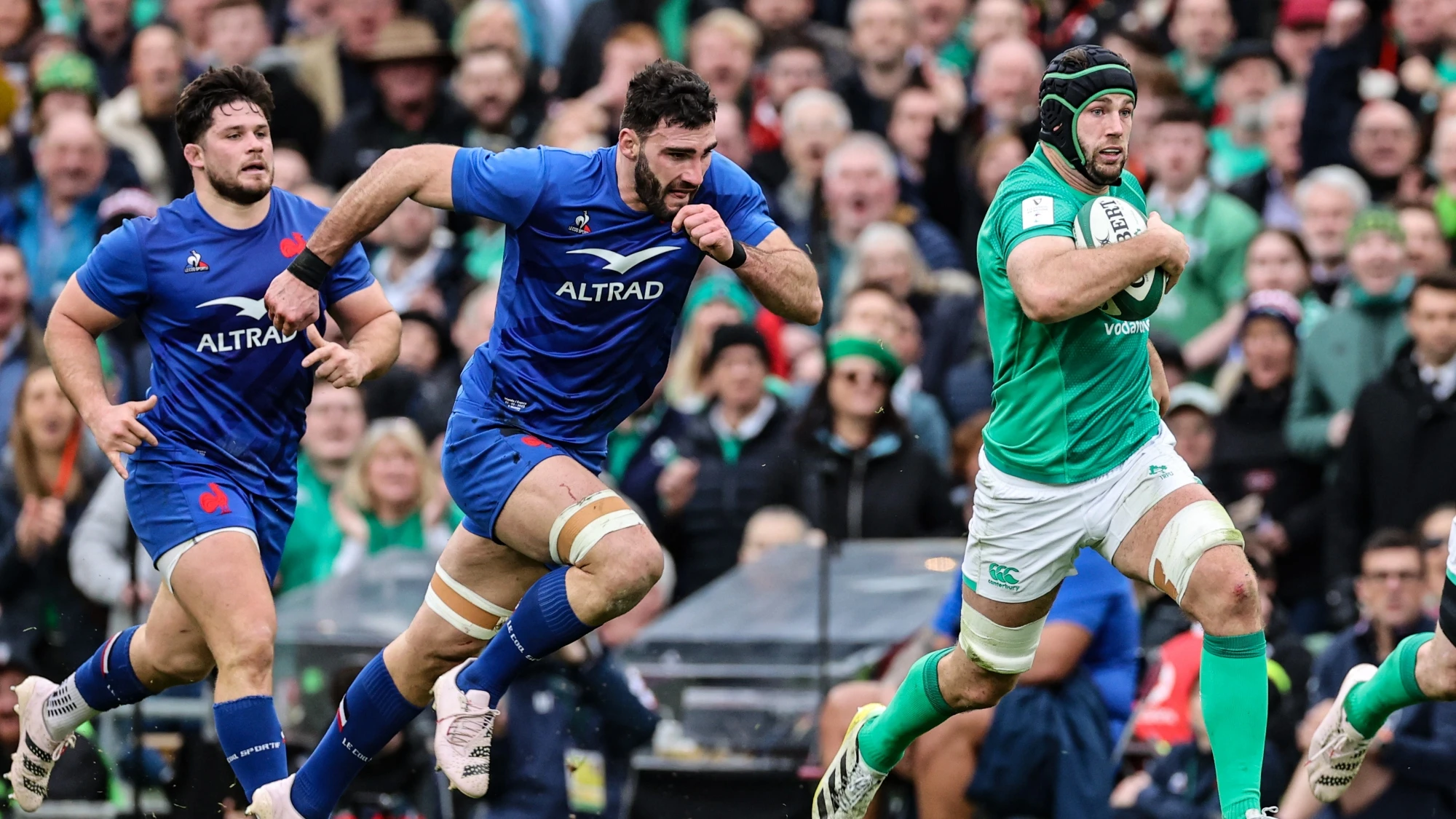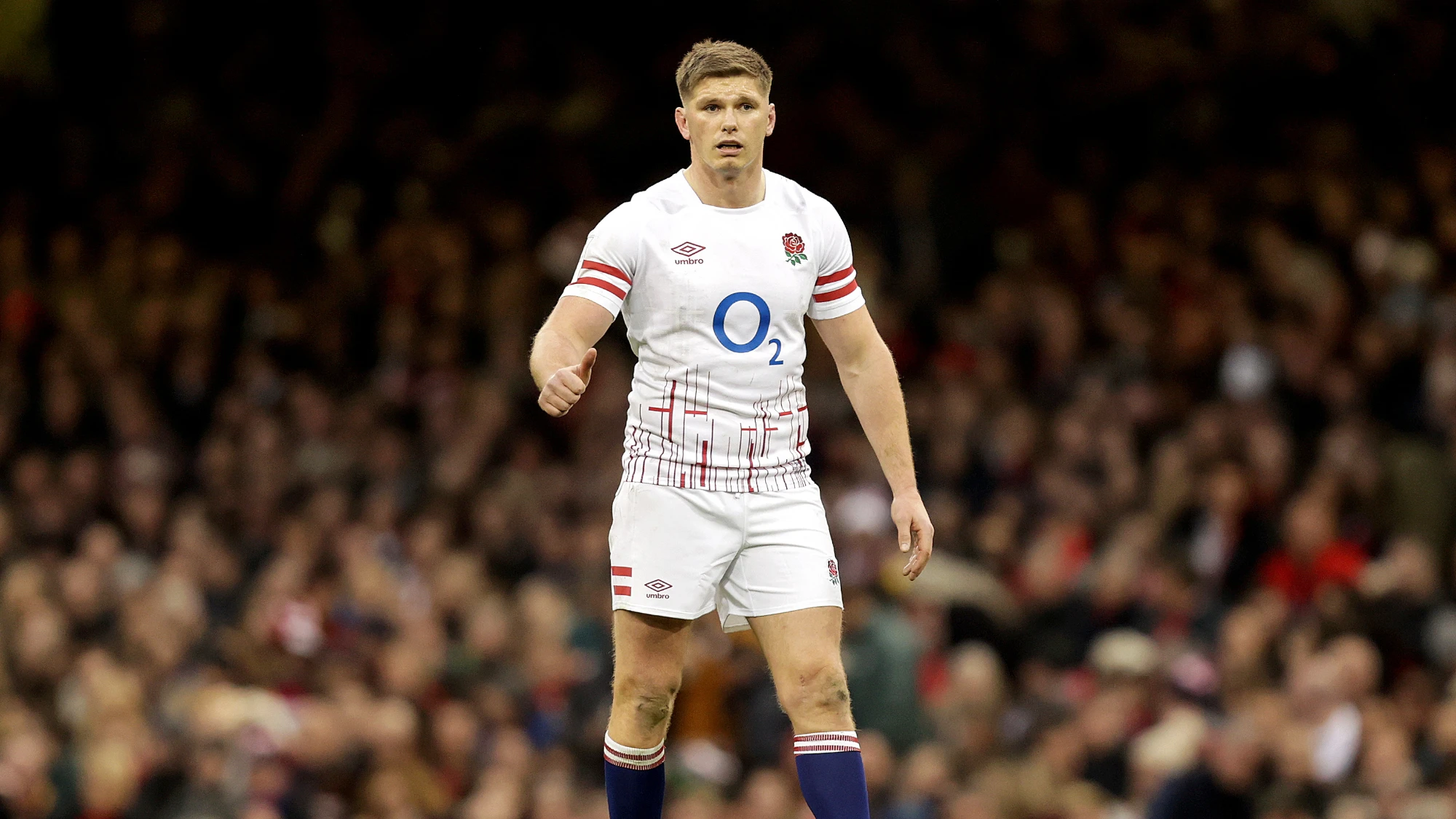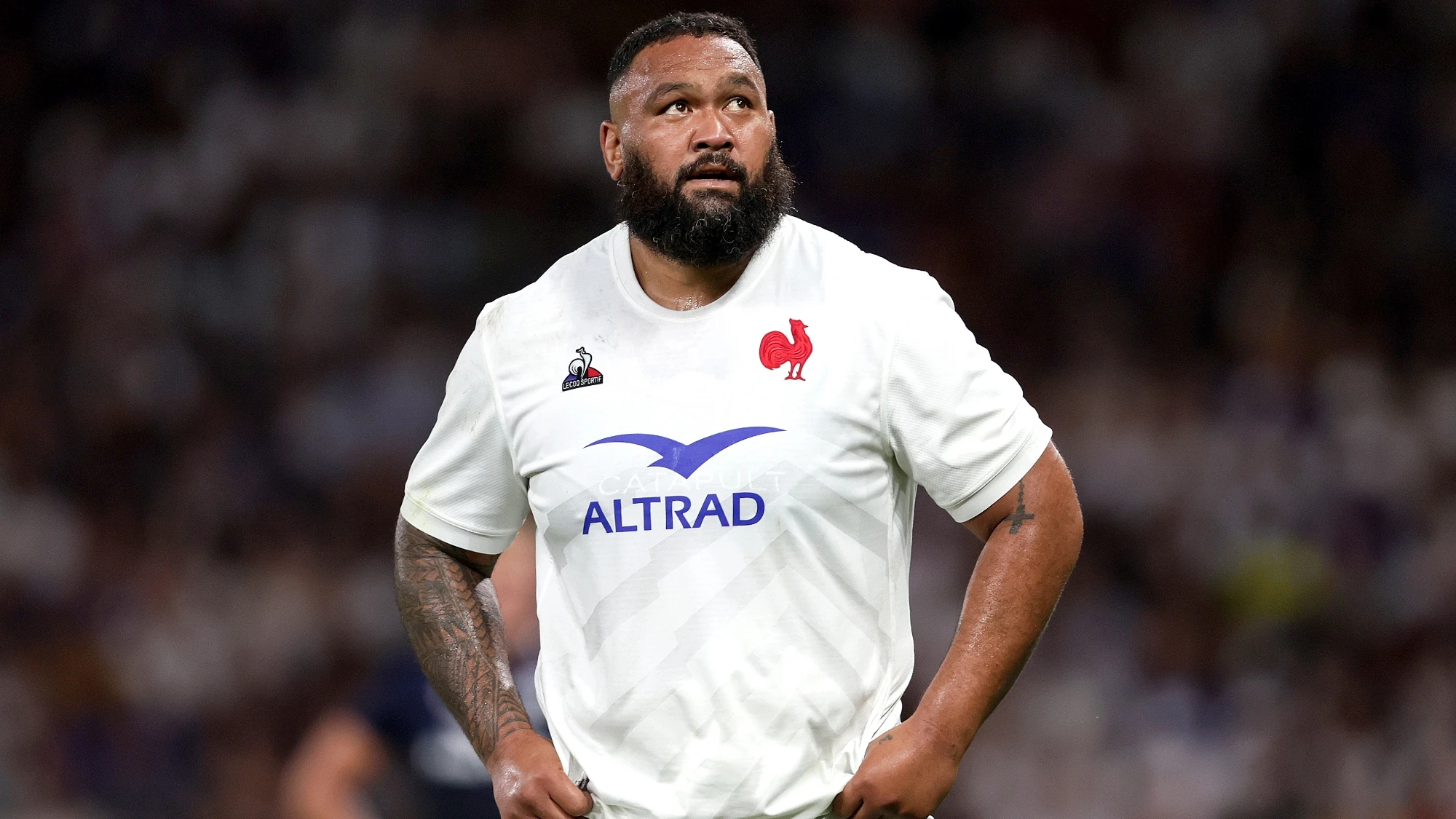Ireland had little left to prove after the success of the past two years under Andy Farrell but Saturday’s win over France dispelled any doubts about just how good a side they are.
Les Bleus were the only team they had not yet conquered since Farrell took over from Joe Schmidt after the 2019 World Cup, and the Grand Slam champions had won 14 matches in a row coming into the game.
In one of the great Guinness Six Nations matches, it was Garry Ringrose’s try that finally sealed it for Ireland, bringing up the bonus point in a 32-19 success.
Considering how many times France’s goal-line defence was needed to deny Ireland further scores, it was a game which they could easily have won by more. And yet there were also crucial moments where France could have retaken the lead in the second half in an absorbing encounter.
So as Ireland recover ahead of the rest week, safe in the knowledge they are top of the Guinness Six Nations table after two rounds, what were those key moments that swung the game their way?
On first viewing, there was a sense that Ireland controlled the opening 40 minutes through their kicking game, but in actual fact, that was something that came later in the game – we will get to it!
Instead, they were actually able to take advantage of France overplaying for much of their territorial gain.
Still, one crucial kick did make a difference just five minutes in. After Ireland had recovered the ball from an Antoine Dupont box-kick, they ran it back through Hugo Keenan to reach the halfway line.
France’s defence was well in position, reading the trademark Sexton loop comfortably, so when the ball went wide to James Lowe, his only option was to kick. His grubber had enough juice on it that Thomas Ramos was not able to collect it cleanly, conceding the lineout that gave Ireland brilliant early field position.
While France’s defence held, forcing a goal-line dropout, it ensured Ireland were playing the game in the right area of the pitch, and they were able to employ an old Joe Schmidt play to put Hugo Keenan over – nine years after Rob Kearney had done the same at Twickenham.
France responded with a stunning counter-attacking try from Damian Penaud, moving 13-7 ahead before Ireland struck again.
Last year in Paris, Mack Hansen’s try from a restart was one of the moments of the Championship, and he showed just how important he is in that area once more.
This time he did not go viral, but the pressure he put on Ramos, forcing a chargedown and giving Ireland possession back once again, effectively set up Lowe’s try.
One feature of Ireland’s performance was the pressure they put France under at the breakdown, with Caelan Doris particularly involved in harrying Antoine Dupont.
Dupont escaped the clutches of the Ireland No.8 on 23 minutes but the pressure meant he could not turn to the boot as he had initially hoped.
After this mazy run, France were in a good position to reload on the right but Grégory Alldritt’s failure to pick up the ball from the base of the ruck proved costly. Josh van der Flier pounced and Ireland poured forwards through Tadhg Beirne and Keenan.
This was the play that gave Ireland the field position that ended with Uini Atonio’s yellow card. Even more important after that, Ireland managed to turn possession close to the line into a try for the first time, with Andrew Porter’s score coming less than a minute after France had been reduced to 14 men to increase the value of that numerical advantage.
Just before the half-hour, with France still down to 14, they got into Ireland territory and were threatening to retake the lead. However, a misunderstanding between Dupont and Alldritt saw the scrum-half offload to his left as the No.8 went right.
Hansen was the beneficiary and Ireland, realising that they had the extra numbers took the ambitious option of running from their own 22, with Johnny Sexton showing he still has pace in those 37-year-old legs before a stunning pass to Caelan Doris.
It did not lead to points, but France were back playing in their own territory.
Ireland’s back row is perfectly balanced, but unlike some international sides, they do not have a specialist jackal among their trio.
Part of the reason is that all three of Doris, Van der Flier and Peter O’Mahony can get over the ball when it is necessary, and Ireland also have Tadhg Beirne, their most dangerous man at the breakdown, at lock.
Doris’ sense of timing is excellent though, and on 35 minutes, his poach when Charles Ollivon was brought down by James Ryan, gave Ireland back the ball and allowed Garry Ringrose to clear deep.
That stopped one dangerous French attack, and from their next attempt, again playing from their own half, Hansen popped up at the crucial moment. Ntamack had Gaël Fickou outside him but as he tried to find the centre, the Ireland winger stepped in for the interception before feeding the onrushing Keenan.
Dupont got back to make a sensational tackle, but it turned a possible French score to end the half into an Ireland penalty and a 22-16 advantage.
With the exception of one Ireland attack started by a brilliant Doris offload to Lowe, the third quarter of the game was dominated by France.
Penaud was increasingly influential as he searched for the ball off his wing, while wing partner Ethan Dumortier did a good imitation including one remarkable break from his own 22.
Ireland found themselves breached on a few occasions, but every time their scramble back was excellent.
That was most obvious when Penaud burst through on the left, skipping through three tackles before being brought down by Ryan to deny a certain try. France recycled quickly, but Stuart McCloskey, arguably culpable of opening up the initial hole through which Penaud broke, got over the ball for the turnover that saved his side.
For 55 minutes, Ireland were controlling territory, without necessarily winning the kicking battle.
All that changed in the next 15 minutes, and most pleasingly for Farrell, it came with Sexton off the pitch.
His replacement, Ross Byrne, has enjoyed plenty of success for Leinster, but this was his finest showing in an Ireland jersey – even better than his match-winning penalty against Australia last November.
The strength of the Ireland team though, is that there are so many kicking options. Where France felt reliant on the length of Dupont’s kicking game, and were therefore stymied when he often did not have time to kick, Ireland had multiple options when they put boot to ball.
Two members of the back three were crucial in turning the tide 15 minutes into the second half. First Lowe was alert to a Ramos grubber, firing a banana kick back over the full-back and turning France on their heels and back towards their own 22.
That was then backed up a minute later by back-three colleague Keenan, taking advantage of a misunderstanding in the French back three to put in a 50:22 that led to a Byrne penalty.
While France got back to within a score at 25-19 through a Ramos drop goal, he then departed. Once he was replaced by fly-half Matthieu Jalibert, playing at full-back, the backfield coverage was never the same.
Craig Casey was the first to take advantage, a delightful chip after a loose pass had put Ireland on the back foot.
Byrne then followed that up with two probing kicks in the space of two minutes, allowing Ireland to play almost the entirety of the final quarter in French territory.
In a match where the ball-in-play time topped 46 minutes, more than ten minutes higher than the average, winning the territory battle late on was vital as fatigue set in.
The second of those Byrne kicks gave France a lineout five metres from their line, and while Dupont was able to clear deep, their lack of energy was clear as Ireland ran it back.
The home side went through 19 phases, with Doris at the heart of it. He touched the ball on four separate occasions, before delivering the decisive final pass out wide to Ringrose, who shrugged off the tackle of Jalibert to get in for the bonus-point score to seal victory.
Leading by 13 with eight minutes left, the win was all but in the bag, but France are capable of breaking from anywhere.
When Romain Taofifenua offloaded to put that man Dupont through a gap, the visitors had a chance to get back into it. However the work rate of Van der Flier and Casey was crucial. They raced back to his right, ensuring the pass outside to Penaud for the easy run-in was never really on.
Instead, Dupont had to try a grubber through, with Bundee Aki able to get to it first and end the final French hopes of victory.
All in all, it was a thoroughly deserved Ireland victory, a reminder of just how slick they are and how they can punish even the slightest of errors.
That they were able to see out the game without their coach on the field Sexton will be one of the most pleasing aspects, not to mention with the likes of Tadhg Furlong, Jamison Gibson-Park and Robbie Henshaw missing.
What this exercise did demonstrate though, was that whether it is work-rate to pressure the opposition’s exit strategy, recognition of when the chance to counter is present, or reading of gaps in the backfield, Ireland do all the little things better than anyone else right now.



